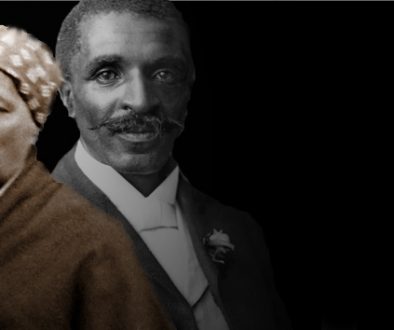I.T. vs Users – Part 2 (Value & Trust vs. Scope & Process)
Yesterday I wrote a description of I.T. from one perspective and a description of computer technology users from another. Today I started writing a list of practical disciplines for end users and technology pros to hopefully gain a better understanding of each other. As I started crafting the list I quickly realized that there is way too much information about these disciplines to cram into one post. Therefore, I have decided to explore these disciplines in several posts over the next few weeks. For today, I am simply going to explore the differences between Value and Trust versus Scope and Process. I will then provide some disciplines that computer users and I.T. pros can use to better understand each other and avoid unnecessary drama when it comes to leveraging technology to help organizations move forward.
The Discipline of Choosing Value and Trust over Scope and Process.
As I have written before, I acknowledge that there will always be a healthy tension that exists in the process of leveraging technology to solve problems and help people. Computer technology users don’t always know what they want. Technology often fails to meet our expectations and technology professionals aren’t always effective at adding value. I believe that practicing the discipline of choosing value and trust over scope and process is a key discipline that can help technology professionals improve customer satisfaction without losing their own minds. Description This discipline comes right out of the Agile Manifesto. Many technology pros have been trained to approach the process of providing technology solutions using predictive methodologies. These methodologies typically place scope as the highest priority of an initiative or project. As an alternative to predictive methodologies, I would agree with Agile principles which state that defining value is more beneficial than defining scope when it comes to leveraging technology to solve problems and help people. Therefore, the number one question the technology pro should always ask themselves throughout any process of designing, planning, transitioning, maintaining and/or improving any given technology solution is, How can I add value and build trust? Sure, it is necessary to have clear definitions of scope and process. Appropriately developed Statements of Work and/or Product Backlogs are just part of doing business in technology. However, defined processes and specifications should serve to move organizations forward. They should serve to add clarity and promote excellence. Too often the opposite occurs. Too often technologists push so hard for definitions that they lose sight of adding value. Too often they end up fighting so hard to keep the scope of a technical project in check that they miss the mark completely and trust is broken.
A Note To Technology Professionals
The technology pro must remember that the customer/end user could not care less about Scope. They don’t care about “best practices” or any other project management buzzword floating around out there. All they care about is figuring out how the technology solution you are proposing will add value to their lives. All they care about is finding solutions they can trust to help them accomplish what they perceive they need to get done when they perceive they need to get it done. They may have defined something 3 months ago during a discovery or analysis process. Now that they see the solution in front of them they realize that they defined Y, but they really need X. They are not trying to drive anyone crazy. They were just not as clear as they thought they were on the appropriate solution to their technology needs. There are numerous empirical models for helping Technology professionals manage these kinds of changes flexibly and effectively, (e.g. Lean Six Sigma, ITILv3, Agile Project Management). If you are a technology professional, I do recommend that you look at these methodologies in greater detail. However, for the purposes of this post, elevating the disciplines of value and trust to the forefront of all technology initiatives is a good place for the technology professional to start.
A Note To End Users
As technologists push toward adding value to the people they serve and as they strive toward building trust with the people they serve, end users would do well to take some steps toward engaging in scope and process development. I submit that Value and Trust are more important than scope and process. However, a basic understanding of technical tactics as they relate to scope and process can help you as the end user ensure that you will gain value and trust from the technical solution you are paying for. For instance, lets say that a technical lead for a given project decides to employ an Agile method for software development like Agile Scrum to implement a software solution. The selected method is well known for being value driven and flexible to end user needs. However, the process still requires involvement and discipline to gain an optimum return on investment. Therefore, the technical lead decides to hold a couple training classes in order to bring everyone up to speed on the methods that will be employed to deliver the solution. In this case the end user would do well to engage in the classes and learn how the process works. Flexibility and value driven problem solving should not be void of discipline and good management practices. Learning how some of these practices work and accepting them as catalysts balanced by appropriate controls can add value. Additionally, I have gone to end users and asked them to prioritize various tasks and/or features according to the value those tasks and/or features offer. In some situations the user answered with the statement, “I need them all.” I can’t think of one time when I have come across a situation where all of the individual feature requests of an I.T. service or solution needed to be fulfilled in one shot in order to add value.
Practicing the Discipline of Value and Trust
A Tip for Technology Professionals
I have found the following question helpful in developing the discipline of Value and Trust. How is this ________________ adding value and trust for my customer? I find that applying this question to meetings, tasks, documents, etc. on a daily/hourly basis to be very helpful in keeping value and trust at the forefront of technology projects. For example, we have all been in those meetings where blood pressure rises over misunderstood specifications. We have all been in those meetings where tempers flair because both technology and business divisions can’t agree on the tactics for improving a process. Problems are never solved through ongoing organizational stalemates and impasses. I find that asking questions like, “Help me understand the value you are trying achieve through this process?” can be very helpful in working through impasses toward a mutually agreeable compromise. Perhaps it is necessary to re-evaluate our priorities on a given project. I find in most cases, when the end user has had a chance to step away from the minute details of a proposed solution and reiterate the value they are trying to achieve through the solution they are requesting, the important details related to scope of their request fall into place. Another example Another application for the “How is this ________ adding value?” question is in meeting planning. Most of us are trained to have agenda meetings in order to ensure that the meetings make good use of our valuable time. I would say that before even an agenda is planned, that the meeting planner is crystal clear on the value that the meeting will add to the objectives of the project, organization, etc. For example, Agile Scrum defines daily 15 minute stand-up meetings with a standing agenda: What did you do yesterday?, What did you do today? What are your current blocks? The agenda for the meeting is not very exciting. However, the predictable 15 minute time-box discipline, the opportunity to check progress, and the opportunity to articulate blocks in progress provide a tremendous amount of value in terms of communication and productivity.
A Tip For End Users
As an end user you too can also think in terms of value when you are participating in technology projects and solutions. Let’s use Microsoft Word as an example. There are easily over 1200 features in MS Word from Spell Check to Word Art. At any given time you might use a fraction of those features to gain value for your organization. If we bog down technology solution providers with engineering a solution to every possible solution we can think of at the time, we risk losing sight of the value we are trying to add through the solution. Like the old cliche goes, “Every time we say yes to one thing, we say no to another.” In this case, I am not even talking about an organization’s inability to say no when they need to say no. In this case, I am talking about all hollow yes’s and half baked deliverables that get passed off as solutions all because end users and I.T. providers don’t take the time to work out, prioritize and focus on solutions that are most valuable to the organization. For instance, here is a good example of well formed user story as it relates to a church operational function: As a family life pastor I need to have an accurate email list of family members so that I can send family life news to people on a monthly basis who are not deceased. Why is this user story such a good example? 1. It defines the role of the primary user who is looking to gain value from the solution. 2. It defines a clear description of the primary value of the list…”to email living recipients.” 3. It defines the primary value of the “data quality” of the list. Data quality is a very broad topic when comes to information technology. It is the kind of topic that can expand quickly into an exhaustive list of requirements that is so long, the original requested value never gets fulfilled. Thus, we end up having perfectly standardized and geocoded mailing addresses, but we are still sending email to dead people.
Conclusion
Whether you are an End User or you are an I.T. Professional, your common ground is Value and Trust. When it is all said and done, everything we do in Information Technology is about people. The challenge of working with people is messy. Often we try to escape the untidy effort of working through difficult solutions with people by implementing over-engineered processes. Practicing disciplines that continuously clarify value and reinforce trust ultimately helps keep our focus where it belongs…on helping people.
Epilogue – (Where does Trust fit in to all of this?)
Come to think of it, I did not elaborate on trust very much in this post. The reality is that trust is at the center of value. It is impossible to add value if there is no trust in the solution, the people who deliver the solution or the people who use the solution. In terms of I.T. services, trust is built on consistent patterns of adding value to an organization. Value and Trust are both topics that have enough depth to stand on their own. I chose to couple Value and Trust in this post because I have observed how closely linked the two topics are when it comes to successful I.T. service delivery.


